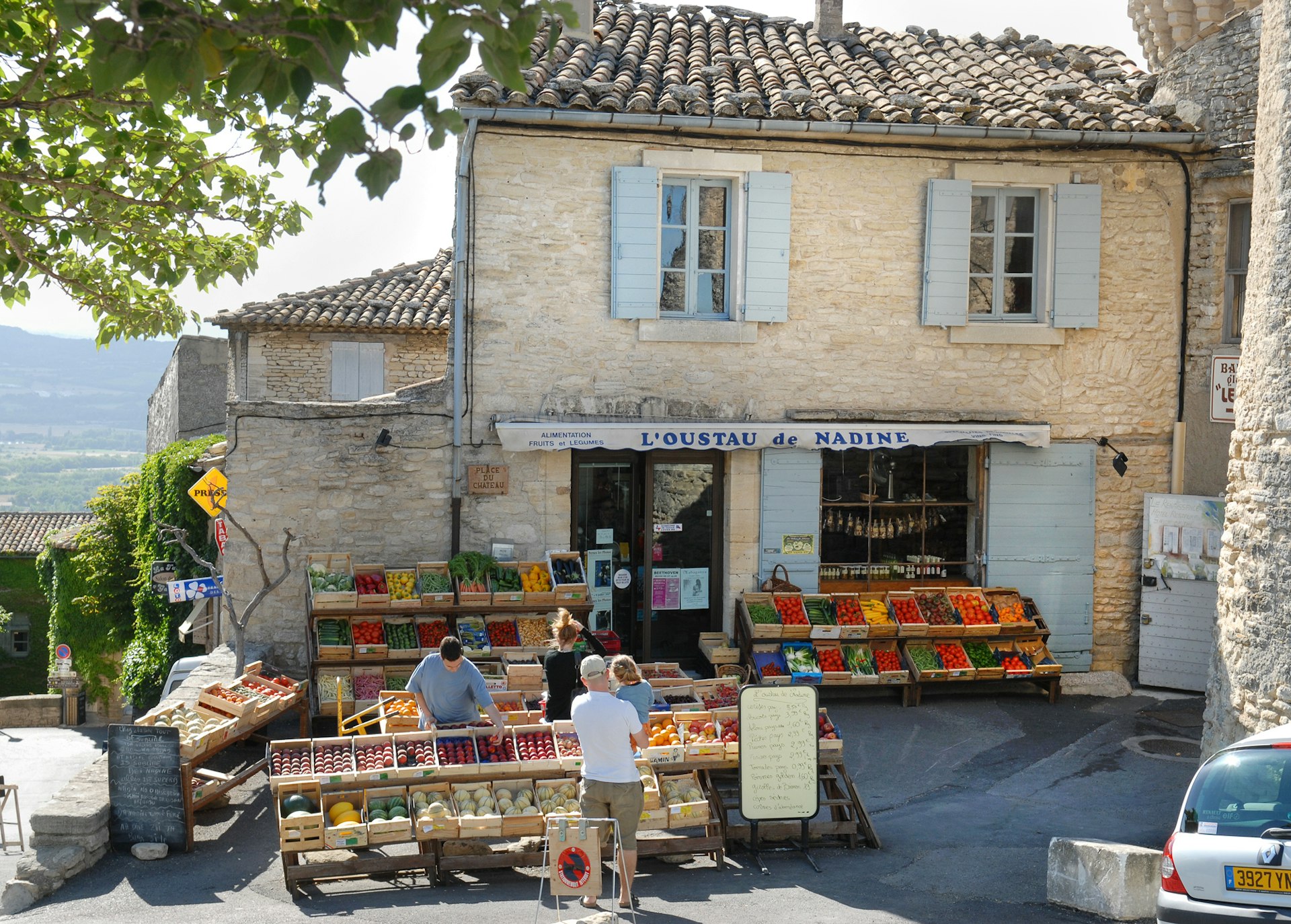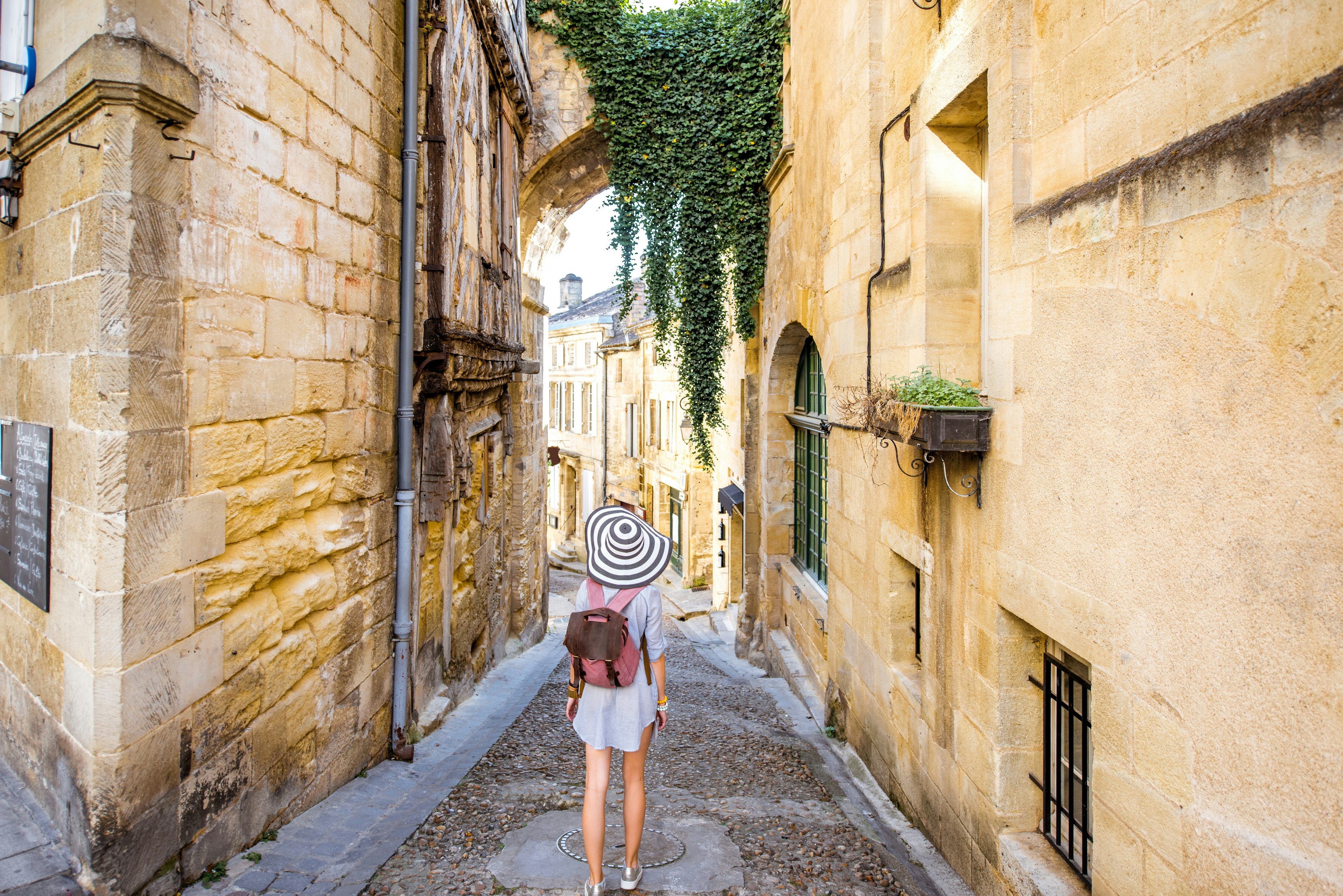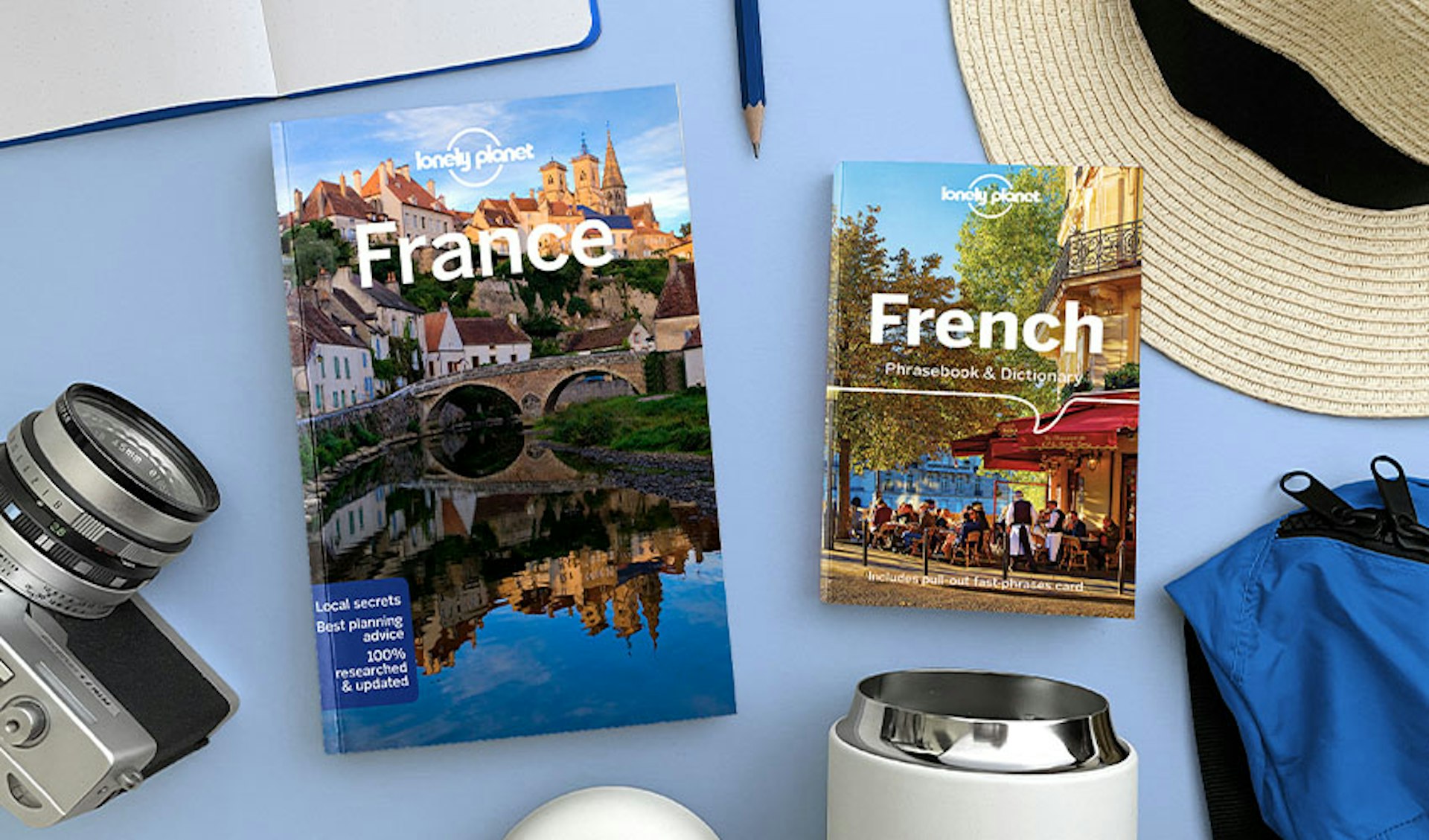With exquisite architecture, centuries of history and spectacular settings, France’s treasure trove of gorgeous villages and tiny towns mesmerizes film directors and Instagrammers. Bypass the autoroutes and travel the meandering backroads to find thousands of rural gems scattered across the countryside.
Arriving early or late on a weekday is best to see France’s prettiest villages at their least crowded (staying in or around the villages overnight is even more magical). Here are 10 of the most beautiful locations to get you started.
Survey the French Riviera from Èze’s exotic gardens
Midway along the Côte d'Azur between Nice and the principality of Monaco (around 7 miles, or 12km, to each), enchanting Èze clings precariously to a craggy peak, with elegant little art galleries, boutiques and restaurants wedged along its cobbled lanes.
Views plunge to the glittering blue Mediterranean from Èze’s Fort de la Revère, built to defend Nice in the 19th century. It's even more dizzying from the site of an earlier medieval fortress now home to botanical gardens filled with succulents, the Jardin Exotique d’Èze – on a clear day, you can see all the way to the gulf of St-Tropez.
When making travel plans, take care not to confuse Èze with the seaside town of Èze-sur-Mer, a vertiginous 1407 feet (429m) below. Walking up isn’t recommended in the hot sun, but with good hiking boots (and plenty of water), it’s a dramatic 45-minute descent via the Chemin de Nietzsche trail.

Explore the postcard-perfect Provençal village of Gordes
On the edge of Provence’s sun-baked Parc Naturel Régional du Luberon (Luberon Regional Natural Park) in the Vaucluse mountains, the tiered hilltop village of Gordes was once in charge of guarding the city of Cavaillon, 10 miles (17km) to the west, and a refuge for people fleeing invasions and religious wars.
Gordes’ jumble of terracotta rooftops, church towers and winding lanes are especially engaging on Tuesday mornings when market stalls sell Provençal fabrics, linens, soaps, sun-ripened fruit and vegetables, cheese, wine and other provisions for an idyllic picnic.
Ancient beehive-shaped bories (limestone huts; best seen at the Village des Bories) dot the surrounding countryside, which is carpeted with lavender in summer – visit Gordes’ lavender museum, and snap a quintessential photo of it framing the 12th-century Abbaye Notre-Dame de Sénanque.
Savor the medieval history of Flavigny-sur-Ozerain through its aniseed sweets
Founded in the 8th century, the beautiful Burgundy village of Flavigny-sur-Ozerain, some 36 miles (60km) northwest of Dijon, tells its medieval history through its ramparts, fortified gates, cobbled streets, artisans’ workshops, houses and hotels. Its aniseed sweets were made by Benedictine monks using green aniseed growing on the hill (a legacy of Julius Caesar’s field base here for treating troops Roman troops, who defeated Vercingetorix at nearby Alésia).
The Troubat family still makes the sweets in the old abbey, and their aroma welcomes you on arrival; don't worry, tours include tastings. In another sweet connection, the village was the setting for the 2000-released Juliette Binoche film Chocolat.

Visit Vauban’s mighty fortifications at Villefranche-de-Conflent
Strategically situated in the eastern Pyrenees, some 31 miles (51km) west of Perpignan, the French Catalonian village of Villefranche-de-Conflent was occupied over the centuries by the Celtics, Romans, Visigoths, Moors and Spanish, and it still echoes with history. Its ramparts were constructed in the 11th century and refortified by French king Louis XIV’s military architect, Sébastien Le Prestre de Vauban, in the 17th century.
As you walk along the walls, peer out through the arrow slits over the wooded valley. Above the village’s boutique-lined streets is Vauban’s vast Fort Libéria. Vauban also fortified one of the ancient caves, Cova Bastera. All of Vauban’s handiwork here now has Unesco World Heritage protection.
From Villefranche-de-Conflent, sweeping Pyrenean views unfold aboard the open-topped carriages of the iconic “yellow train” Le Train Jaune, aka le canari (the canary), as it chugs 39 miles (63km) to Latour de Carol.

Gaze out over the vineyards surrounding St-Émilion
Deep in red wine country, 29 miles (47km) east of Bordeaux in southwestern France, St-Émilion is a Unesco-listed jewel. Named for a miracle-working monk who lived in a cave here in the 8th century, the village teeters atop a hill surrounded by vineyards that glow gold in the lingering late afternoon light.
The cave, along with an early 12th-century church carved in the limestone rock, is among the places that can only be visited on tourist-office-run tours, with even more heavenly views from the church’s bell tower. Run by local vintners, the Maison du Vin de St-Émilion showcases the vineyards’ famous wines.

Wander the flower-filled streets of Rochefort-en-Terre
Window boxes burst with flowers in photogenic Rochefort-en-Terre. Set above the Gueuzon valley on a rocky outcrop in southwestern Brittany, 24 miles (39km) east of Vannes, the village is a medieval vision of cobbled streets and squares with a huddle of slate-roofed granite and half-timbered buildings sheltering galleries, Breton crêperies and a 10th-century church. It’s a beautiful place for strolling, particularly from place St-Michel to its ruined castle’s gardens and the shores of its lovely nearby lake, Moulin Neuf.
Taste sugar-crusted tarts in pretty Pérouges
Just 18 miles (30km) northeast of France’s “gastronomic capital,” Lyon, Pérouges is an irresistible foray for foodies. This medieval hill-perched village is famed for its namesake galette pérougienne. You can try this thin, flat sugared tart made from buttery brioche dough at several places, including the Hostellerie du Vieux Pérouges, where it originated. The inn at the heart of the village is a perfect place from which to explore Pérouges’ pebbled alleys, yellow-stone houses and linden “liberty trees” planted in 1792 during the French Revolution. Staying overnight allows you to admire the village beautifully illuminated after dark.
Step back into the medieval era in St-Cirq-Lapopie
Back in the Middle Ages, the steep alleys of clifftop St-Cirq-Lapopie, perched above the River Lot in southwestern central France and 15 miles (25km) east of Cahors, were filled with the workshops of artisans such as roubinetaïres (wood turners who made barrel taps). Today these higgledy-piggledy lanes are home to art galleries, restaurants and quaint places to stay; highlights include early-16th-century Gothic church and panoramic castle ruins looking out over the terracotta rooftops.
Below, a cruise aboard a traditional gabarre (wooden barge) provides a wonderful perspective of the village on the sheer cliffs that plummet to the verdant river valley.

Discover Bergheim’s history of witchcraft and wine
On the Alsace Wine Route in northeastern France, 10 miles (17km) north of Colmar near the German border, fairy tale Bergheim is surrounded by vines and forests and wrapped in double defensive walls punctuated by towers. History overflows in the village, which over the centuries has seen numerous rulers, invasions and even burnings at the stake for witchcraft – its Haxahus (La Maison des Sorcières or Witches’ House) tells the story.
Leading from the village’s Obertor (Porte Haute) gate, Grand Rue is lined with pastel Hansel-and-Gretel-style half-timbered buildings; look for the early 18th-century wall-mounted sundial and wrought-iron signs of winegrowers’ houses. After sampling the local vintages and hearty Alsatian specialties at Wistub du Sommelier, work them off on a 1.25 mile (2km) stroll around Bergheim’s 14th-century ramparts.
Make a pilgrimage to St-Jean Pied de Port
France’s final outpost on the pilgrim route to Santiago de Compostela, St-Jean Pied de Port is in the French Basque Country, 33 miles (53km) southeast of Bayonne at the base of the western Pyrenees (its name means St-Jean at the Foot of the Pass) before the trail crosses into Spain.
Pilgrims still enter the whitewashed mountain village through Porte St-Jacques, one of four medieval gates guarding the walled town, following the route’s traditional scallop shells embedded along rue de la Citadelle (a path climbs to the citadel, from where you can take in the panoramas). At the opposite end, Porte Notre-Dame is adjacent to a charming bridge arching across the River Nive. Basque traditions remain strong, including Monday morning markets, pelota ball sports, and, in summer, traditional music and dancing.


